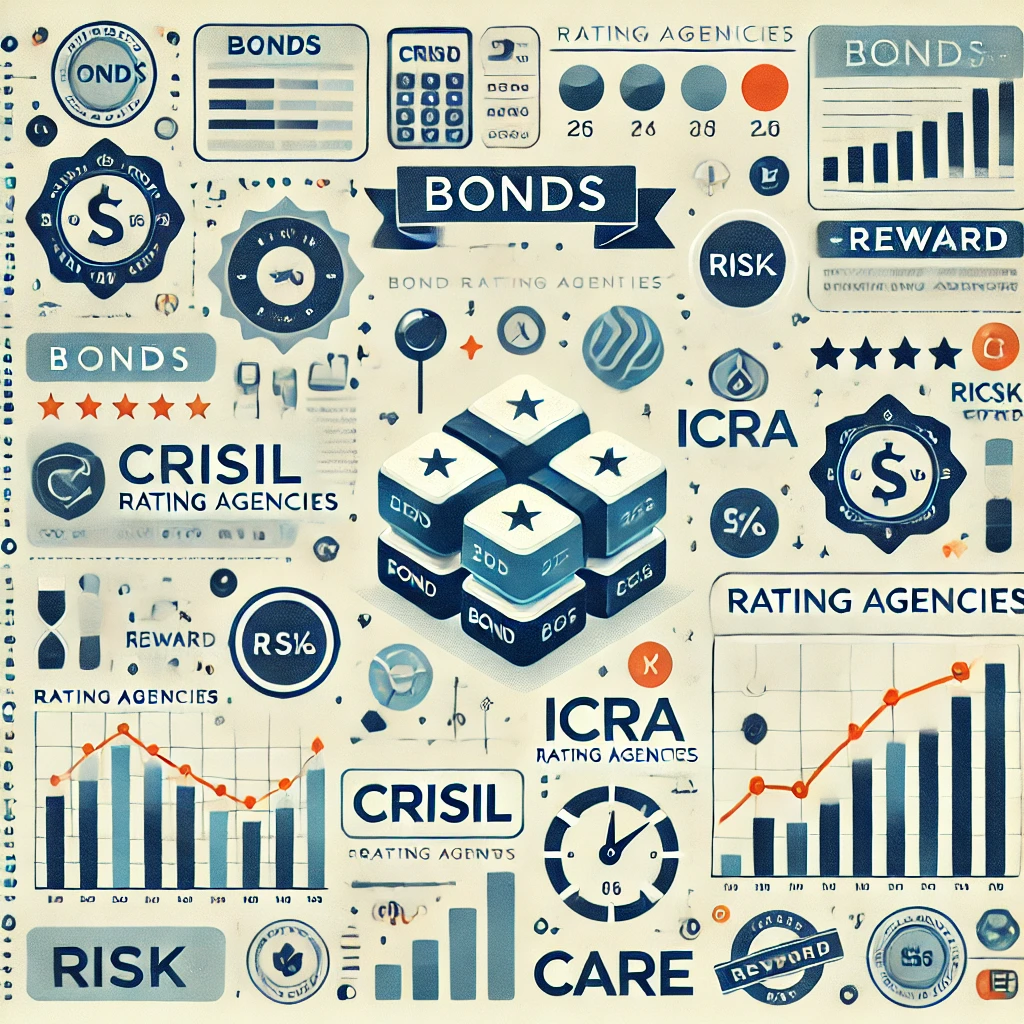Part 1
What are Bonds?
Bonds are fixed-income financial instruments that represent a loan made by an investor to a borrower, often a corporation or government. When you purchase a bond, you essentially lend money to the issuer for a set period, with the promise of receiving interest payments over time and the principal amount upon maturity. Bonds are favored by investors seeking a stable income source and lower-risk investments compared to equities.
Bonds serve multiple purposes: they finance government projects, corporate expansions, and other initiatives. In return for lending funds, bondholders receive periodic interest payments known as “coupon payments.” Bonds are a popular choice for conservative investors, providing relatively predictable returns with a lower risk profile compared to stocks.
Bond Ratings: What Do They Mean?
Bond ratings provide an assessment of a bond issuer’s creditworthiness, indicating the likelihood of timely interest and principal repayment. These ratings, typically issued by independent agencies, act as a guide for investors by categorizing bonds based on risk.
Higher ratings indicate a stronger financial position and a lower risk of default, while lower ratings signal higher risk. Ratings can impact both the bond’s attractiveness to investors and its interest rate; high-rated bonds usually offer lower returns, while low-rated (riskier) bonds provide higher returns to compensate for added risk.
Major Bond Rating Agencies in India
In India, several agencies provide bond ratings, including:
- CRISIL: India’s leading rating agency, renowned for rigorous assessment standards.
- ICRA: Associated with Moody’s, ICRA offers credit ratings for a broad range of sectors.
- CARE: Specializes in ratings across sectors like manufacturing, finance, and infrastructure.
- India Ratings and Research: A subsidiary of Fitch, it evaluates issuers across the financial spectrum.
Each of these agencies uses a unique scale to rank bonds. For example, AAA ratings indicate the highest credit quality, while D ratings denote bonds in default.
Bond Rating Scale Example
| Rating | Description | Risk Level |
|---|---|---|
| AAA | Highest credit quality | Lowest risk |
| AA | High credit quality | Low risk |
| A | Adequate credit quality | Moderate risk |
| BBB | Moderate credit quality | Moderate risk |
| BB and below | Low credit quality | High risk |
| D | Default | Highest risk |
These ratings help investors make informed decisions based on their risk tolerance.
Risks and Rewards of Investing in Bonds
Rewards of Bonds
- Steady Income: Bonds provide fixed interest payments, offering a reliable income source.
- Capital Preservation: Bonds generally return the principal amount at maturity, making them suitable for investors focused on protecting their capital.
- Diversification: Bonds diversify an investment portfolio, providing stability when other assets (like stocks) fluctuate.
Risks Involved
- Credit Risk: This risk arises if the bond issuer fails to make interest or principal payments. Lower-rated bonds have higher credit risk.
- Interest Rate Risk: Bond prices move inversely with interest rates; when rates rise, bond prices fall and vice versa. This impacts investors who wish to sell bonds before maturity.
- Inflation Risk: Rising inflation erodes the purchasing power of future bond payments, particularly affecting long-term bonds.
- Liquidity Risk: Not all bonds are easily sold on secondary markets, which can lead to liquidity issues if investors wish to exit their positions.
How to Evaluate Bond Investments in India
- Consider the Rating: High-rated bonds (AAA or AA) are safer but offer lower returns, while lower-rated bonds (BBB and below) carry more risk but provide higher returns.
- Evaluate Interest Rate Trends: If interest rates are expected to rise, short-term bonds may be preferable to mitigate interest rate risk.
- Assess Your Risk Tolerance: Conservative investors may prefer government bonds or AAA-rated corporate bonds. More aggressive investors could consider lower-rated bonds with higher yields.
Conclusion
Bonds are essential instruments for investors seeking stable returns, especially those nearing retirement or aiming to preserve capital. Understanding bond ratings, the role of agencies, and the associated risks allows investors to make sound decisions. India’s rating agencies—CRISIL, ICRA, CARE, and India Ratings—play a vital role in assessing bond safety and helping investors navigate this landscape.
When chosen wisely, bonds provide a reliable income stream and valuable portfolio diversification, offering a balanced approach to financial independence and security.
💬 Interested in bond investing? Share your thoughts with us! @RetireEarlyMe
For more detailed resources, check out CRISIL Ratings and ICRA’s Credit Ratings.
